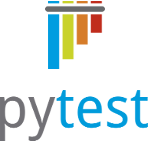This blog post provides a short overview of some of the major features and changes in pytest 3.3. See the CHANGELOG for the complete list.
Python 2.6 and 3.3 support dropped
Pytest 3.3 and onwards will no longer support Python 2.6 and 3.3. Those Python versions are EOL for some time now and incur maintenance and compatibility costs on the pytest core team, and following up with the rest of the community we decided that they will no longer be supported starting with this version. Users using those versions and with a modern enough pip should not be affected, otherwise they should pin pytest to < 3.3.
Logging capture
Pytest now captures and displays output from the standard logging module. The user can control the logging level to be captured by specifying options in pytest.ini, the command line and also during individual tests using markers. Also, a caplog fixture is available that enables users to test the captured log during specific tests (similar to capsys for example). For more information, please see the logging docs. This feature was introduced by merging the popular pytest-catchlog plugin, thanks to Thomas Hisch. Be advised that with this merge the backward compatibility interface with the defunct pytest-capturelog has been dropped.
Progress display
The pytest output now includes a percentage indicator. Here's the partial output of pytest's own test suite:
============================= test session starts =============================
platform win32 -- Python 3.6.3, pytest-3.3.0, py-1.5.2, pluggy-0.6.0
rootdir: C:\Users\appveyor\AppData\Local\Temp\1\devpi-test0\targz\pytest-3.3.0, inifile: tox.ini
plugins: hypothesis-3.38.5
collected 1985 items
testing\acceptance_test.py ...............s............................. [ 2%]
...x............. [ 3%]
testing\deprecated_test.py ........ [ 3%]
testing\test_argcomplete.py ss [ 3%]
testing\test_assertion.py .............................................. [ 5%]
...........................s....... [ 7%]
testing\test_assertrewrite.py ......................................s..s [ 9%]
sss........... [ 10%]
The output can be changed back to its former style by configuring your pytest.ini:
[pytest]
console_output_style=classic
New capfdbinary and capsysbinary fixtures
Those two new fixtures return their contents as bytes instead of str, making them suitable to interact with programs that write binary data
to stdout/stderr.
pytest.skip() at module level
pytest.skip in 3.0 was changed so it could not be used at the module level; it was a common mistake to use it as a decorator in a test function,
when the user should have used pytest.mark.skip instead, which would cause the whole module to be skipped.
Some users missed this functionality, so allow_module_level can be passed to pytest.skip to skip an entire module:
import pytest
pytest.skip('this whole module is TODO', allow_module_level=True)
New dependencies
Pytest now depends on the following modules:
This change should not affect users.
Improvements and bugfixes
As usual, this release includes a lot of small improvements and bug fixes. Read the full CHANGELOG for the complete list.
